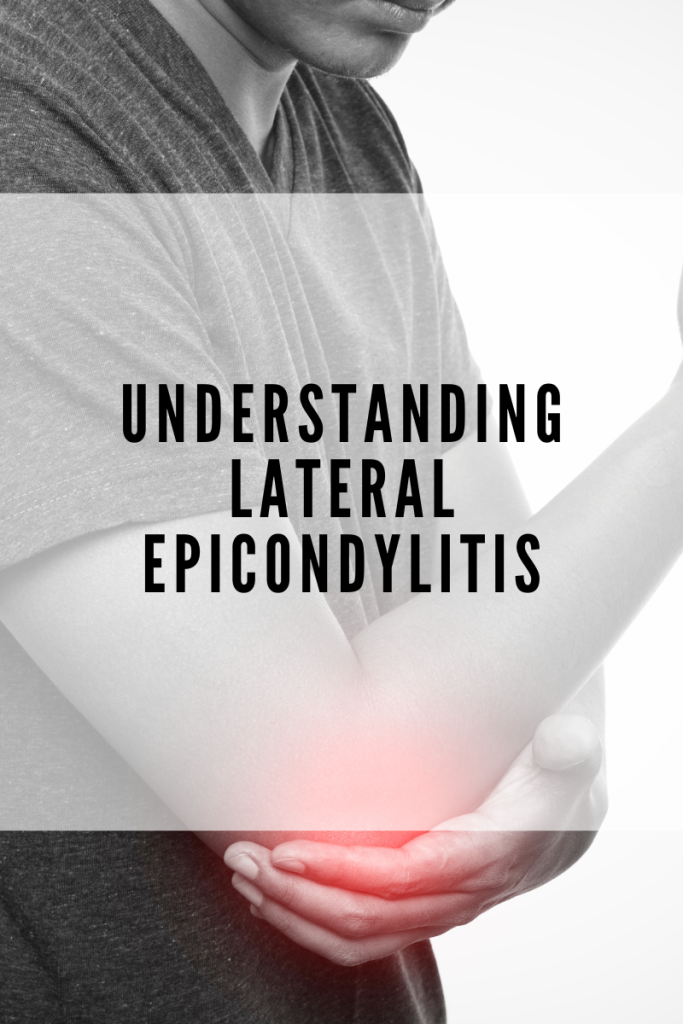Lateral epicondylitis, commonly known as “tennis elbow”, is a prevalent condition that can affect more than just athletes. This condition, stemming from repetitive strain on the tendons in the elbow, can significantly impact daily activities. In this comprehensive guide, we delve into the symptoms, diagnosis, and treatment of lateral epicondylitis, with a special focus on revolutionary methods like dry needling and shockwave therapy.
What is Lateral Epicondylitis?
Lateral epicondylitis is a musculoskeletal condition characterized by pain and tenderness on the outside of the elbow. It’s often caused by overuse of the forearm muscles and tendons, leading to inflammation and micro-tears in the tendons attached to the lateral epicondyle (a bony bump on the outside of the elbow).

Symptoms of Lateral Epicondylitis:
- Pain and Tenderness: The most notable symptom is pain that radiates from the outside of the elbow into the forearm and wrist.
- Weak Grip Strength: Difficulty in holding onto objects, turning doorknobs, or shaking hands.
- Morning Stiffness: A stiff elbow joint, especially in the morning or after periods of inactivity.
- Increased Pain with Activities: Activities involving gripping or lifting can exacerbate the pain.
Diagnosing Lateral Epicondylitis:
A comprehensive diagnosis typically involves a physical examination and patient history analysis. Physicians may perform specific tests like the Cozen’s test or the Mill’s test to assess pain and stiffness in the elbow. In some cases, imaging tests like X-rays or MRIs might be employed to rule out other conditions.
Treatment Approaches:
Treatment for lateral epicondylitis usually starts with conservative methods like rest, ice, and over-the-counter pain relievers. However, for persistent or severe cases, more advanced treatments are considered.
1. Rehab Chiropractic Care: A cornerstone in treating lateral epicondylitis, involving exercises to strengthen and stretch the forearm muscles.
2. Bracing or Strapping: Using a brace or strap to reduce strain on the injured tendons.
3. Dry Needling: This innovative treatment involves inserting fine needles into the affected muscles. Dry needling helps in reducing muscle tension and improving blood flow, facilitating the healing process.
4. Shockwave Therapy: A non-invasive procedure where shockwaves are directed at the affected area to stimulate natural healing processes. It’s known for its effectiveness in reducing pain and promoting tendon healing.
5. Surgery: In rare cases where non-surgical treatments don’t provide relief, surgical options might be considered.
Lateral epicondylitis can be a painful and debilitating condition, but with the right diagnosis and treatment plan, most people can return to their normal activities. Treatments like dry needling and shockwave therapy are showing promising results in the management of this condition. It’s important to consult with healthcare professionals to determine the most appropriate treatment for your specific case.
If you’re experiencing symptoms of lateral epicondylitis, it’s crucial to seek professional medical advice. Early intervention can lead to better outcomes. Share your experiences or ask your questions below, and let’s discuss the best ways to manage and overcome this condition.

Recent Comments